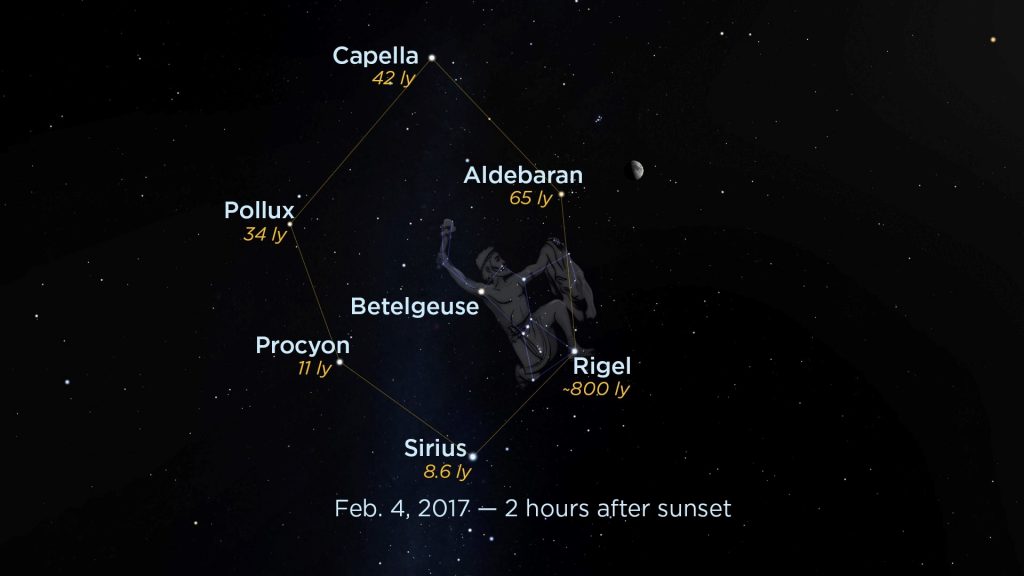Finding the winter hexagon (and maybe your birthday star)
January 31, 2017
By Amy Sayle
Although it certainly can be chilly, winter is a great time of year to see bright stars. Many of the brightest stars in the sky happen to be concentrated in an area near the constellation Orion the Hunter as part of a large star pattern known as the Winter Hexagon.
To find Orion, look for three bright stars in a row that form Orion’s belt. Orion’s shoulder is represented by the red supergiant star Betelgeuse, and Rigel marks a foot or knee. Starting with Rigel, you can play connect-the-dots counterclockwise through the sky to find the six bright stars that form the hexagon: Rigel, Sirius, Procyon, Pollux, Capella, Aldebaran.

You might see these Winter Hexagon stars as a pattern, but it doesn’t mean the stars lie at the same distance. Some are closer, practically next door neighbors, such as the brightest-appearing star in the night sky, Sirius. It’s “only” about 8 and a half light years away, which means that its starlight—traveling at the speed of light, 186,000 miles a second—takes eight and a half years to reach us. If you do the math, that works out to many trillions of miles.
So if you happen to be 8 and a half years old, you might think of Sirius as your birthday star because the light we see left that star around the time you were born.
If you’re 11, Procyon is your birthday star. Light you see tonight from that star left around the year 2006.
If you’re 34, you’re the same age as starlight from Pollux.
Capella is the birthday star for anyone who’s 42. And starlight from Aldebaran should be eligible for a senior discount, since the light you see is 65 years old.
Nobody has Rigel as a birthday star—it’s too far away. Its light takes about 800 years to reach us. So we see the star as it looked when the light left it eight hundred years ago, or roughly the year 1200.
The sky is like a time machine: the farther away the object, the farther back in time you see.Want to see these stars in the real sky? Join us, if the weather permits, for our next monthly skywatching session at Jordan Lake, on Saturday, Feb. 4, 2017, from 6:30 to 8:30 p.m., at Ebenezer Church Recreation Area.
Want to learn more about birthday stars? Join us for “Star Families: Time Machine in the Sky,” on Saturday, March 11, 2017, from 3:30 to 4:15 p.m. That’s a rain-or-shine program because it takes place under the simulated sky of the fulldome theater.
